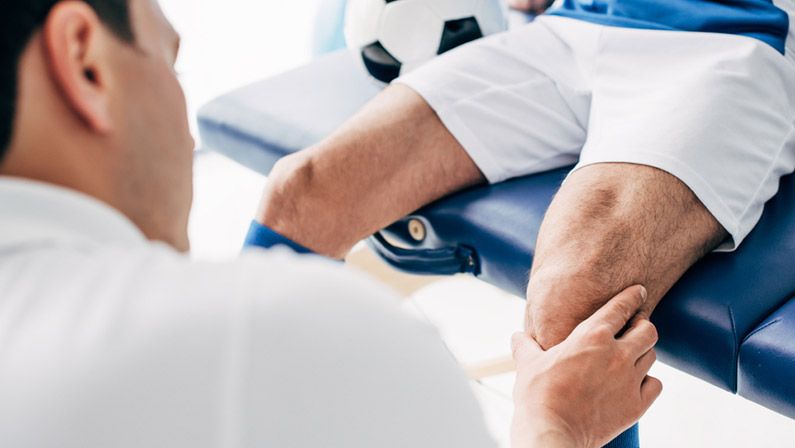Ligament Injuries (ACL, MCL, PCL, LCL)
When the Knee’s Supporting Bands Are Torn or Stretched
The knee has four main ligaments that keep it stable. Injuries to these bands, especially the ACL, are common in sports and accidents, leading to pain, swelling, and instability.
Why Ligaments Are Key to Knee Stability
Ligaments are strong bands of tissue that connect bones to each other. In the knee, they prevent the joint from moving too far in any direction. When stretched or torn, the knee can become unstable, painful, or unable to support weight.
The Four Main Knee Ligaments
- ACL (Anterior Cruciate Ligament): prevents the shin bone from sliding forward; commonly injured in sports with sudden stops or pivots
- PCL (Posterior Cruciate Ligament): prevents the shin bone from sliding backward; often injured in car accidents or falls
- MCL (Medial Collateral Ligament): stabilises the inner knee; usually hurt by a direct blow from the side
- LCL (Lateral Collateral Ligament): stabilises the outer knee; less commonly injured but important for balance
Symptoms That May Point to a Ligament Injury
Signs vary depending on which ligament is affected but may include:
- A popping sound at the time of injury (common with ACL tears)
- Rapid swelling within hours
- Knee instability or “giving way”
- Pain when walking, twisting, or bearing weight
- Limited range of motion
How Doctors Diagnose Ligament Injuries
Accurate diagnosis is important for planning treatment. Assessment may include:
- Physical examination: testing joint stability and movement
- Imaging: MRI scans are best for visualising ligament tears
- X-rays: to rule out fractures that may accompany ligament injuries
Treatment Options for Knee Ligament Injuries
Treatment depends on the severity of the tear and the patient’s activity level:
- Non-surgical care: rest, bracing, physiotherapy, and gradual strengthening for mild sprains or partial tears
- Medications: to manage swelling and discomfort
- Rehabilitation: physiotherapy to restore balance, stability, and strength
- Surgery: ligament reconstruction (especially ACL) may be recommended for complete tears, recurrent instability, or active individuals
Living with a Ligament Injury
For athletes, ligament injuries can feel career-threatening, but with proper treatment and rehabilitation, many return to sport. For non-athletes, restoring stability is key to avoiding falls and further damage. Early treatment helps reduce the risk of long-term arthritis.
Frequently Asked Questions (FAQ)
1. Which knee ligament is most commonly injured?
The ACL is the most commonly injured ligament, especially in sports involving sudden stops, jumps, and pivots.
2. Can ligaments heal without surgery?
Partial tears and some ligaments (like the MCL) can heal with rest and physiotherapy. Complete ACL tears often require surgery for stability.
3. What’s the recovery time after ACL reconstruction?
Recovery may take 6–12 months, depending on age, fitness, and rehabilitation progress.
4. Is it possible to walk with a torn ligament?
Yes, some people can still walk with torn ligaments, but the knee may feel unstable or painful. Medical evaluation is important.
5. Do all athletes with ligament injuries need surgery?
Not always. Treatment depends on the ligament involved, the severity of injury, and the demands of the sport.
Book a Consultation for Suspected Knee Ligament Injury
If you’ve experienced a knee injury with pain, swelling, or instability, schedule an appointment at Mash Spine & Orthopaedics for proper diagnosis and treatment.





